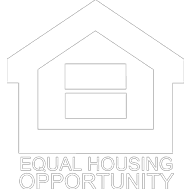The Orlando housing market, a long-standing indicator of Sun Belt prosperity, has been a hot topic for real estate investors and homebuyers. After years of a construction surge fueled by population growth and post-pandemic migration, a pressing question has emerged: Are Orlando’s builders overbuilding?
As of late 2025, the market is sending mixed signals. Inventory is rising, home prices are softening, and builders are offering more incentives. For buyers and investors, this presents a landscape ripe with opportunity.

A Buyer’s Market on the Horizon
Data from late 2025 indicates the Orlando real estate market is tilting in favor of buyers. While not yet a complete buyer’s market, the shift is undeniable.
Here’s a snapshot of the current environment:
- Rising Inventory: The supply of homes has reached a six-month level, the highest in 14 years. Statewide, active listings are up 24.5% year-over-year, giving buyers more choices and less competition.
- Slowing Price Growth: Median home prices in Orlando saw a modest 4.7% year-over-year increase to $433,000 in July 2025. However, homes are taking longer to sell, an average of 52 days compared to 33 days a year ago.
- Increased Negotiating Power: With more options and less urgency, buyers now have greater power to negotiate on price and terms. Bidding wars have become less common.
Construction Trends: A Market in Transition
The construction boom, especially in the multifamily sector, is a key factor in the current market dynamics. While new supply is still coming online, the pipeline is beginning to shrink.
Multifamily Construction Slowdown
In 2024, multifamily starts dropped by a staggering 60% year-over-year, falling from 12,303 units in 2023 to just 4,933. This dramatic decline signals a leaner construction pipeline for 2026 and beyond. Despite this, completions remained high in 2024, with 12,937 units delivered. For 2025, projections show a decrease to 11,481 completions.
| Year | Starts | Completions | Under Construction (EOY) |
| 2023 | 12,303 | N/A | N/A |
| 2024 | 4,933 | 12,937 | 15,655 |
| 2025 (Projected) | N/A | 11,481 | N/A |
| 10-Year Average | 9,372 | 8,511 | 15,017 |
This data suggests that while the market is absorbing a recent wave of new apartments, the sharp drop in new starts will likely restore balance, potentially giving landlords more pricing power by 2026.
Single-Family Home Supply
Builders of single-family homes are also adjusting to market conditions. According to the Orlando Regional REALTOR® Association (ORRA), new listings for single-family homes surged in early 2024. This reflects both builder confidence and a need to move inventory as demand softens. Nationally, Florida remains a top state for new single-family permits, with Orlando leading the charge.
Inventory and Pricing: What the Numbers Say
Active listings have risen sharply, providing a clear advantage for buyers. Total inventory reached 11,697 units in January 2025, the highest level since 2015. The months of supply metric climbed to 7.7 months, well above the six-month threshold of a balanced market.
Price Corrections and Opportunities
After years of rapid appreciation, Orlando’s home prices are stabilizing. Zillow’s Home Value Index for Orlando showed a 4.5% year-over-year decline in September 2025, the steepest drop since 2011.
However, data varies; Redfin reported a 5.6% year-over-year increase in median sale price for October 2025. This divergence shows a market in flux, where new, higher-priced construction can skew median prices even as overall values soften.
For buyers, this means more frequent price reductions and increased negotiating power.
| Metric | Buyer-Friendly Neighborhoods | Seller-Resilient Neighborhoods |
| Neighborhoods | East Orlando, Lake Nona, Horizon West, Downtown | Dr. Phillips, Windermere, Celebration |
| Median Price (2025) | $375,000 – $615,000 | $600,000 – $850,000+ |
| Avg. Days on Market | 65 – 74 days | 52 – 58 days |
| Buyer Advantage | Strong to Moderate | Moderate to Balanced |
In buyer-friendly areas like East Orlando and Lake Nona, high inventory is giving buyers leverage. In seller-resilient areas like Dr. Phillips and Windermere, strong demand from families and proximity to attractions maintain seller advantages, though this is tempered by rising insurance and HOA costs.
What This Means for You
For Homebuyers
The current Orlando real estate market presents a unique window of opportunity. With more homes to choose from and less competition, you have the power to negotiate favorable terms. Builders are offering significant incentives, including price cuts and mortgage rate buydowns, to attract buyers. If you’ve been on the fence, now is a great time to explore your options, especially in new construction.
For Investors
For real estate investors, the softening market offers strategic buying opportunities. The expected 2.4% rent growth by the end of 2025, particularly in East Orlando, signals strong rental demand. While short-term rental activity has cooled slightly, Orlando’s status as a top tourist destination continues to support this market segment, especially in areas like Osceola County.
Are Prices Crashing?
Not exactly. It’s complicated. Data from Redfin suggests median sale prices are up roughly 4.7% to $433,000, while Zillow shows a slight softening with values around $378,000.
What does this divergence tell us? It tells us the market is “resetting.” Sellers who overprice their homes are seeing them sit on the market for an average of 52 days (up from 33 days last year).
To get deals done, sellers and builders have to be realistic.

Your Next Move in the Orlando Market
Orlando is not in a classic overbuilding crisis. Instead, it’s undergoing a cyclical reset after a period of intense growth. While there are short-term signs of oversupply, the market’s long-term fundamentals, driven by strong population and job growth, remain solid. The sharp decrease in new construction starts is already paving the way for a more balanced market in 2026.
For buyers and investors, the current landscape offers choices, negotiating power, and the chance to invest in one of America’s most dynamic cities. The key is to understand the nuances of each submarket and act strategically.
Ready to explore the opportunities in the Orlando housing market?
Speak with Mike Chen to get expert insights on where to invest and how to benefit from the current market conditions.


